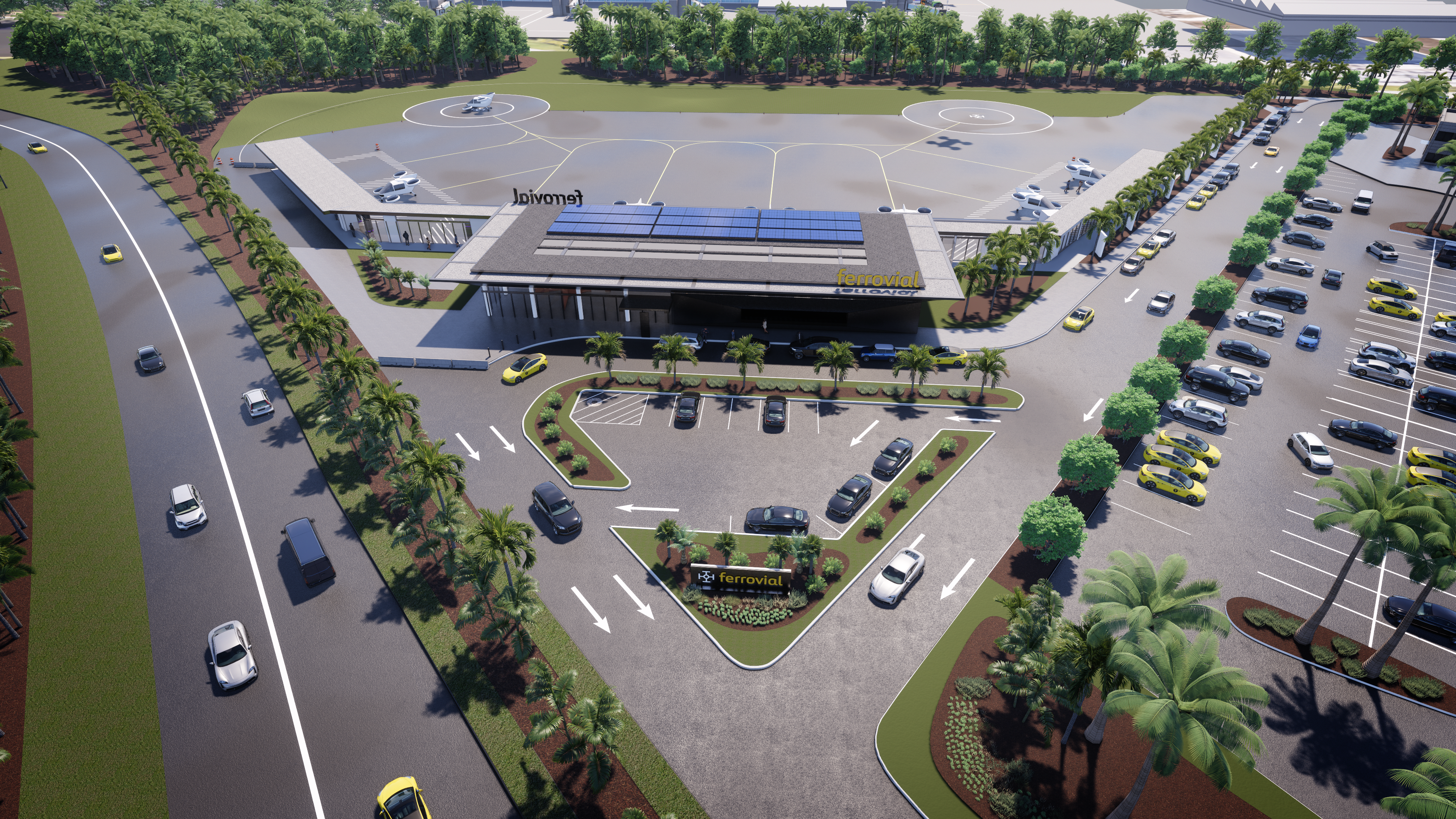Click Here to View This Page on Production Frontend
Click Here to Export Node Content
Click Here to View Printer-Friendly Version (Raw Backend)
Note: front-end display has links to styled print versions.
Content Node ID: 419837
In Lake Nona, an upwardly mobile new neighborhood in sprawling greater Orlando, the new wave of public transportation is taking shape, bringing significant changes on the ground and in the air. The Florida community, which is still being developed, offers an almost-clear canvas for eVTOL aircraft developer Lilium and its ground infrastructure partner Ferrovial in a fast-growing state that is, at last, seeking 21st-century alternatives to the automobile.
The airports, highways, and rail stations group is making plans for a network of 10 or more vertiports connecting cities across Florida, including Tampa, West Palm Beach, Fort Lauderdale, Naples, and Miami. With commercial eVTOL flights expected to launch in 2025, the next 24 months will see a hive of activity as Ferrovial and other companies get all the key stakeholders on board and start to take plans from the drawing board and onto construction sites.
Ferrovial is a publicly-traded infrastructure group based in Spain that has established its vertiports division in Irving, Texas. According to Kevin Cox, who is CEO of the vertiports division, his team’s vision for advanced air mobility is firmly founded in demand-driven market realities, rather than an “if you build it, they will come” mindset. “We want to build vertiports where people want to go, and that will mainly be in congested areas, and they must be as close as possible to the first and last mile points [for individual journeys],” he told FutureFlight.
Another core tenet in Ferrovial’s strategy is that the new ground infrastructure needs to be, as far as possible, purpose-built mainly in greenfield or brownfield sites. “As we’ve moved on from the analytical and theoretical [stages of preparation] it has become fairly clear that building [vertiports] on the tops of existing roofs and parking lots is not as easy as some people think,” Cox stated.
And, despite the partnership announced with Germany-based Lilium back in January 2021, Ferrovial takes the view that the AAM business model will only work if vertiports are shared by potentially competing eVTOL operators and are designed in an agnostic way that would accommodate multiple aircraft types. This approach builds on the 70-year-old company’s extensive experience in building and operating major airports worldwide, such as London Heathrow, where it is the largest shareholder, and New York’s JFK, where it is responsible for the new $9 billion Terminal 1.
Ferrovial Vertiports is already working with a mix of aircraft manufacturers and operators under some 30 non-disclosure agreements covering potential plans for services including short-hop, intra-city, and sub-regional connections of 100 miles or more, as well as hub-airport feeder flights.
“The secret sauce is trying to bring potential operators together in terms of where vertiports need to be and how a series of networks can be supported,” Cox explained. “We will not build speculative vertiport networks; we will let the manufacturer and operators triangulate where they want to build their networks. And it’s always going to be about engaging with local leaders to take account of their priorities, responding to questions, and helping them to understand how quiet, quick, and green this [AAM] is going to be.”
Ferrovial is ready to invest its own capital to build the vertiports, harvesting revenues and profits from income such as landing fees and lease costs while passing through costs like electricity for charging aircraft batteries directly to the operators. Cox sees vertiport sites typically being no more than one to three acres, with little space for extensive supporting infrastructure such as aircraft maintenance facilities.
As energized as Ferrovial is about this new mode of transportation, the company’s leadership takes a sober view of the timeline for its business plan. It sees some small-scale, localized eVTOL air taxi service launches in early-adopter cities in 2025 or 2026, but, in his view, the tipping point for the new sector will come from 2030 onwards.
Other targets locations for AAM infrastructure development include Spain and the UK, where Ferrovial is partnered with Lilium's rival eVTOL maker Vertical Aerospace. Ferrovial faces competition from other companies that have shown a willingness to make a big investment in the sector, including Skyports, which is already conducting vertiport trials in locations such as Paris and California, as well as developing concept of operations plans with eVTOL developers such as Eve Air Mobility.
While reluctant to talk about details of his group’s vertiport ambitions, Cox did acknowledge to FutureFlight that what’s happening in Florida is “further along than in other places, and there will be multiple operators there.” He explained that by the time it selects its development sites, it will have already been in extensive talks with local officials in a regulatory process he expects to take six months or longer in each case, followed by a construction period of up to 18 months. So, clearly, the clock is ticking if Lake Nona is to get on the AAM map in a little more than two years from now.
